|
Aurora Gallery back to spaceweather.com |
| Summary: On January 7th, the interplanetary magnetic field (IMF) near Earth tipped south, sparking a brief but strong geomagnetic storm. Ten days of quiet followed. Then giant sunspot 720 appeared and started unleashing X-class solar flares. Strong-to-extreme geomagnetic storms ensued on Jan. 17th - 21st as a result of CME-hits to Earth's magnetic field. [See also the November 2004 aurora gallery.] Page 1 | Page 2 | Page 3 | Page 4 | This is Page 5 Got
pictures? Submit
them. |
| Photographer, Location | Images | Comments | |
|
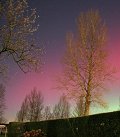
|
Casper ter Kuile,
De Bilt, the Netherlands Jan. 21 |
#1, #2, #3 |
Fire nice aurora's over the Netherlands between 19 and 23 UTC as a result of the X7 flare. Photo details: Canon 20D, 17/4.0, 3200 ASA, 2.5 and 5 seconds exposure. |
|
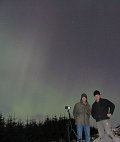
|
Al Meldrum,
from a hillside above Killin, Perthshire Scotland Jan. 21 |
#1, #2 |
This was the second bright display of the evening, about 2230 UT. The first we saw from home in Edinburgh (about 1930 UT) and as that faded we drove for an hour to the dark skies of Perthshire. Thats my brother Ewen on the left with his canon a40 |
|
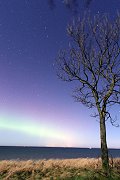
|
Students from the local High-School in Sřnderborg (AGS),
Sřnderborg, Denmark Jan. 22 |
#1, #2, #3, #4, more |
Canon EOS 10D, ISO 400, 40s exposure. The sky was covered with heavy clouds and rain all evening until it, at last, cleared around midnight but then the aurora activity had gone dramatically down. A short film sequence is avaliable on our website. |
|
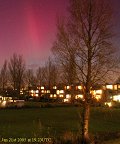
|
Jacob Kuiper,
De Bilt, central part of The Netherlands, Jan. 21 |
#1, #2 |
In clear skies and full-moonlit landscape, the outburst of aurora was magnificent over the central part of The Netherlands. Jan 21 st, at 1923 UTC, the red skies on image 1 covered the NW and N-part over the town of De Bilt. Nice white streamers were seen too. After 20 minutes the reddisch glow subsided. Some hours later, still a greenish glow stayed along the northern horizon. At 2136 UTC image 2 shows this green glow. For these images a digital camera, Minolta-Z3 has been used, exposuretime arnd 15 seconds, at 200 ASA setting. |
|
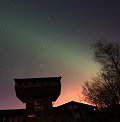
|
Craig Smith,
Lochwinnoch, Scotland. Jan. 21 |
#1 |
The aurora was very bright even with the moon in the way. I scrambled home to get my camera, even with activity dying down managed to get this shot. Canon 300D 16mm lens, 800 ISO, 20 sec exposure. |
|
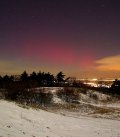
|
Boros-Oláh Gábor,
Budapest, Hungary Jan. 21 |
#1, #2, more |
Nikon Coolpix 5400, ISO 200, Exp: 8 and 30s |
|
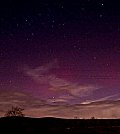
|
Tamás Ladányi,
Veszprém, Hungary Jan. 21 |
#1, more |
Canon EOS 300D, ISO 800, 15 sec, 18 mm obj. |
|
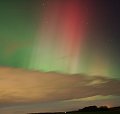
|
Martin Larsen,
Near Viborg, Denmark. Jan. 21 |
#1, more |
Fantastic auroras; the best I have ever seen! Casio QV3000EX digicam, F2, 20-30 seconds. Contrast raised a bit afterwards. |
|
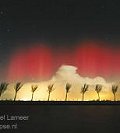
|
Jan Karel Lameer,
Beemster Polder, Netherlands Jan. 21 |
#1, #2, more |
Aurora ten feet below sealevel, near the Noordhollands kanaal at the Beemster Polder. These photographs are part of a 128 frame time-lapse sequence that recorded the first substorm of the evening from begin to end. The pictures were taken on Kodak Royal Supra 800, push developed two stops to ISO 3200. The exposure time was 20 seconds and a Nikkor 16/3,5 full frame fisheye lens was used. |
|
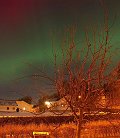
|
Mats Gustavsson,
Stenungsund, Sweden Jan. 21 |
#1, #2, #3 |
The pictures are from Stenungsund, westcoast of south Sweden. First picture taken at 20:53 UCT (21/1/05), the others between 00:29-00:35 UCT (22/1/05). I have never seen such strong aurora in this part of the country! Not frequent in Stenungsund. Photo details: Konica Minolta A200. Iso 100. 10-30 sec. F2.8 |
|

